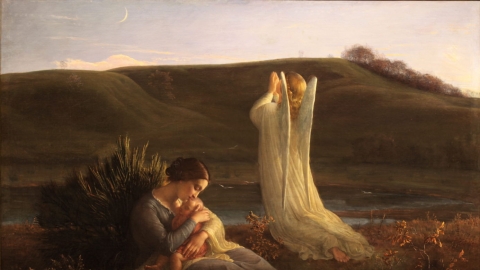Reform of the Roman Curia: A Closed Meeting With Spectator Cardinals (2)

On August 27, 2022, a consistory was held in the Vatican for the creation of 21 cardinals. This consistory preceded a meeting of the 200 cardinals present in Rome held August 29-30 with the purpose of endorsing the apostolic constitution Prædicate evangelium, reforming the Roman curia.
Meanwhile, on Sunday the 28th, Francis went to the Basilica of Santa Maria di Collemagio in L'Aquila in Abruzzo, to the tomb of Pope St. Celestine V (1210-1296), where he did not show any intention of resigning like his illustrious predecessor. Even before the two-day meeting on the reform of the Roman curia, several Vaticanists had spoken of “cardinals being used to distract attention” and a “confiscated synodality.”
The first part explained that the cardinals were not allowed to discuss the reform of the Curia, and the reason why. This second part focuses on the cardinals appointed by Francis.
Who are the cardinals created by Francis to elect his successor?
With the reform of the curia, Francis wants to shape a Church in his image: less institutional, which, for him, means a more “missionary” Church. A Church also less Roman, which, in his eyes, means a Church less “courtesan.” And it is in this double spirit – less institutional and less Roman – that he created the cardinals who will compose the conclave responsible for electing his successor.
According to the agency cath.ch, since 2013, the pope has convened 8 consistories. In all, he created 121 cardinals, 95 of whom were electors at the time of their creation, i.e., they were under the age of 80. Of these 95 cardinals, 83 or 87%, are still electors today. The average age at which a prelate became a cardinal elector under Francis is 67.
39% of cardinal electors created since 2013 are European. If the proportion of European cardinals remains important, it tends to decrease slowly with each consistory. At the 2013 conclave, Europeans made up 52% of the cardinals. Today, they are only 42%.
By appointing only 39% of European cardinal electors, Pope Francis is de facto reducing the weight of Europe in the Sacred College. The second continent where the Argentine pontiff has drawn the most cardinal electors is Asia (19%), followed by Africa (14%). These two continents now represent respectively 15% and 12% of the college of cardinal electors, against 9% and 10% in 2013.
Of the 95 cardinal electors created under Francis, 18 come from countries that had never been represented in the College of Cardinal Electors before: 33% come from Asia, 22% from Africa, 17% from Central America and 11% from Oceania. These figures show the special attention the pontiff is giving to the “peripheries.”
Alongside these quantitative data, it is useful to question the quality of the cardinals created by Francis, as the Argentinian blog Caminante Wanderer did on July 10, not hesitating to speak of a “devalued Sacred College.”
“One of the most serious consequences of Pope Francis’ pontificate will be a Sacred College of Cardinals modeled in his image and likeness which can be summed up in one word: mediocre,” writes the pope's compatriot. And he explains: “Francis keeps competent people away; he pushes them away and relegates them to a corner.”
“If we focus on one of the most brilliant changes he promised to make in his administration – the cleaning up of Vatican finances – we find that he systematically expelled all those who had the ability and the strength to put Vatican finances in order, like Cardinal George Pell or Fr. Ángel Vallejo Balda.”
“None of them accepted the opacities that the highest circles, including the Roman pontiff himself, demanded of them. They were expelled from Rome, and in both cases in a cruel and merciless manner. They experienced the pontifical ‘mercy’ very closely.”
The Wanderer continues: “Pope Bergoglio prefers instead to surround himself with mediocre people whom he can easily manipulate because they know they owe him everything, and thus provide bonds of loyalty that are hard to break. Victor ‘Tucho’ Fernandez, a solemn nullity who was elevated to the rank of rector of the Pontifical Catholic University of Argentina, archbishop of La Plata, and editor of papal encyclicals.”
“Or yet, easy to blackmail characters, as in the case of the incompetent Edgar Peña Parra, deputy secretary of state, whom an obscene past has pursued since his seminary years. And one can wonder why he chose Msgr. Gustavo Zanchetta, Msgr. Giovanni Ricca, or Fr. Fabian Pedacchio as close collaborators: because of their competence in their role or their wisdom as advisers? Or rather because of the collection of skeletons they keep in their closets?”
During the Consistorial Mass he celebrated in St. Peter's Basilica on August 30, 2022, Francis gave the cardinals the definition of a true “minister of the Church”: “one who knows how to marvel at the plan of God and who, in this spirit, passionately loves the Church, ready to serve her mission where and as the Holy Spirit wills.”
But God writes straight with the curved lines of men, including those of a pope. Infallibly His plan is realized for His one, holy, catholic, apostolic, and Roman Church – a bimillennial and not sixty-year-old Church, as the conciliar reformers believe.
(Sources : katholisches.info/Monday Vatican/cath.ch/Caminante Wanderer - Trad. à partir de benoitetmoi/DICI n°424 – FSSPX.Actualités)
Illustration : Photo 178063916 / Calotte Cardinal Rouge © Wojciech Grabowski | Dreamstime.com





